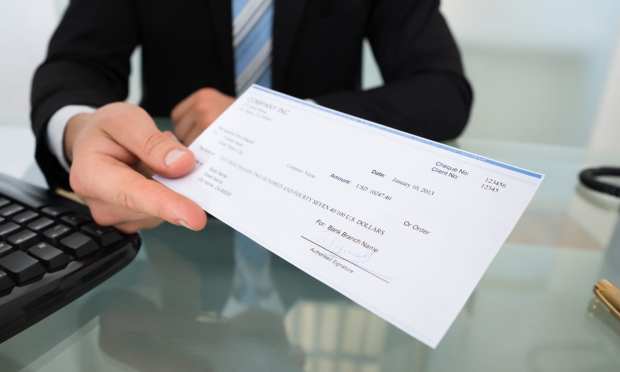How Removing Paper Check Payment Friction Can Open The Door To B2B Payment Digitization

Businesses’ migration to online payment tools has accelerated over the past year, but that does not mean they are ready to completely relinquish the B2B payment methods they have utilized for decades. Paper checks still occupy an important space in the B2B and even the consumer-to-business (C2B) payments cycle for a significant number of businesses, Katherine Weislogel, head of treasury and payment solutions for Synovus Bank, said in a recent PYMNTS interview. It is critical for businesses’ banks to ensure that companies understand and are prepared for digitization, she continued, but these financial institutions (FIs) must also be cognizant that businesses will rarely abandon paper entirely.
“There are some early adopters … moving out of paper, but then there are some that are sitting back and watching,” she said. “And as these [electronic payment] tools become more and more available, it is really the job of my team to make sure that we are showing our clients that path. But there still are some that want to hold that paper, and until they see the benefit and the value [of other methods], they are not willing to give it up.”
Banks should work to offer B2B payment solutions that take paper checks into account, creating a reasonable path forward for future digitization. FIs must look to meet the payment needs of businesses where they currently are, especially as full B2B payment digitization is still not within reach for numerous companies.
Outlasting The 2020 Payments Digitization Boom
Firms of all sizes and in every industry can struggle mightily to upgrade their payment processes to digital methods. There are still businesses running on infrastructure so outdated that they cannot make automate clearing house (ACH) transfers, Weislogel said, and many companies still have time set aside to manage check payments as part of their typical AR and AP processes. She explained that a large number of companies are still unconvinced of electronic payment methods’ potential benefits, while others have crafted decades-long relationships with clients or vendors that revolve around sending or receiving paper checks. This can create challenges for these businesses as they aim to innovate their B2B payment processes.
“Sometimes they are in their own way,” she admitted. “If you look at some of these back offices, their tenure of their folks that are sitting in there posting paper payments can be 30, 40 years in the role. We see that all the time. They only know what they know and they do not want to change their practices, and the head of AR does not want to shake it up because these folks have been there forever. They know the clients; they know it all.”
It will be imperative for companies to find tools and solutions that can remove the friction points surrounding check use rather than simply replacing the method outright, as paper checks are all but certain to outlast the most recent digitization boom. Synovus Bank recently announced a partnership with a third-party provider to create support for same-day processing within the banks’ AR solution that can ease some of the costs and complexities of these payments, Weislogel said. Such solutions can help speed up paper check-based payments while giving businesses a gentle nudge toward digitization — something that is going to be more necessary as manual processes become more and more time-consuming and expensive.
“The more you touch paper, the slower the process goes and the more costly it is,” Weislogel said. “That is just a fact — as these clients are coming out of the pandemic, they are feeling this [need for] hypergrowth, and they are all feeling it between technology efficiency and labor issues, [so] they are crying for these conversations and these ideas and solutions [we] brought to them.”
Adding in same-day processing and other solutions that can accelerate paper check payments while cutting processing costs is the first step toward ensuring that businesses have a clear path to payment digitization. Banks and businesses must also take note of other emerging technologies and payment methods that could play key B2B payment roles in the future now that the road to electronic payments is open.
The Path To Real-Time Payments
Another development businesses must monitor carefully is the expansion of real-time payment networks. Weislogel said that both The Clearing House (TCH) and the U.S. Federal Reserve are at various stages of building out networks to support these payments. The latter’s network is expected to launch in 2023 while TCH’s has been live for some time. Businesses are likely to have greater expectations for swifter and more seamless payments as these networks grow.
“The other big thing … that is coming down fast and furious [and] had helped solve some of this is real-time payments,” she said. “So clients are going to be looking more and more at the Zelles, the Venmos, the real-time payments across the board to solve for these solutions.”
Staying abreast of payment developments in the fast-changing B2B space will be key for businesses and their banks. It is important to ensure companies can match their customers’ and clients’ payment expectations, something that will eventually require them to relinquish much of their grip on paper checks — but they need not give up on them entirely just yet.
